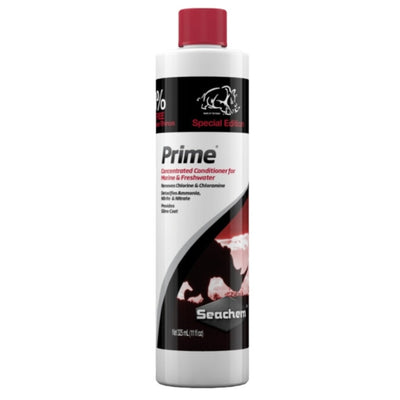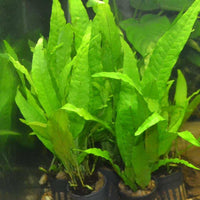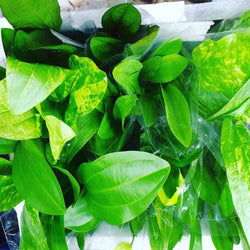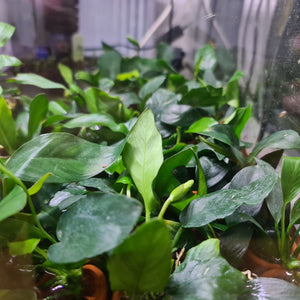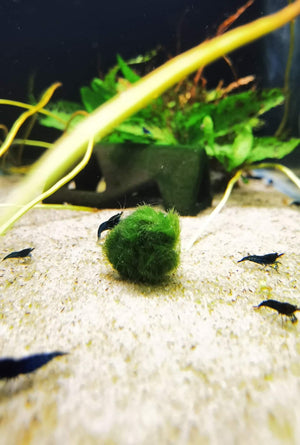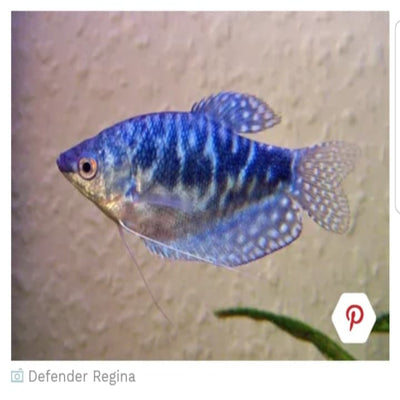How To Choose The Right Betta Fish Tank For Your Fish
The importance of the right Type of Betta Fish Tank
Betta fish are a popular choice for aquarium hobbyists due to their vibrant colours and distinctive personalities. However, as I've found in the shop, it is crucial to appreciate the importance of selecting an appropriate type of tank and environment for these aquatic creatures. In fact, up to recently, we use a professional drop system enabling consistent temperature and filtration, and our Betta's are very happy with this except for one thing: they didn't always appreciate the moving water.
The tank serves as their habitat, and with careful observation it should be crafted to mimic the natural environment temperature and flow closely to ensure the fish’s physical and mental well-being. Selecting a suitable fish tank and accessories is a critical step in providing your Betta fish with a high-quality life.
Quick Consideration of the Betta Fish Tank
Before delving into the specifics, let's review the primary factors that you need to consider while selecting a fish tank for your Betta fish. All the following are things to consider: tank size, quality, temperature control, filtration system, lighting, and decoration are all features that contribute to your Betta's thriving environment.
Furthermore, your budget and space for the tank are additional factors to account for while selecting a Betta tank. Regular tank maintenance is also crucial to ensure a cleaner and healthier environment for your Betta fish. Keep these vital points in your mind as we dive further into the details.
Navigating through the Basics of Betta Fish Tank
Understanding the Role of Tank Size
Size does matter when it comes to Betta fish tanks. It's a common misconception that these fish can survive healthily in small, cup-like habitats. But this is only for a shop environment where they are temporarily housed. Contrary to this belief a small tank only suits, over time Betta fish require ample space for swimming and exploring their environment. After all, Betta in real life actually jump from puddle to puddle, and so must be considered a very eager explorer. One could imagine they may become depressed in a monotonous, small environment.
Tanks for a Siamese fighting fish like Betta at a minimum must be at least 10 litres in volume, with the optimal size being 20 litres or larger. This gives them enough space to swim without stress and to stay active. They are excellent jumpers, so a spacious tank fitted with a lid prevents escape. Also, these fish occasionally need surface air, so there must be space between the water and the tank lid.
If you plan to introduce other types of fish into the tank with your Betta, then you would need a larger tank, preferably 50 litres or larger. This ensures individual territories are established, reducing the chances of aggression and stress among the different species.
Tank Water Quality for Betta Fish
Your regular attention must be given to the tank water as Betta fish are susceptible to poor water conditions. Factors such as temperature, pH and hardness are important and should be regularly monitored.
Betta fish thrive best in warm water conditions, with temperatures between 25 and 27 degrees Celsius (78 and 80 degrees Fahrenheit). This requires the use of a heater, particularly if you live in a cooler climate. Always check the heater regularly to avoid fluctuations or extreme temperatures. Ensure your heater has safety features to ensure it doesn't make the water too hot if it breaks or there is user error, a heart-breaking tragedy many older or cheap heaters don't account for.
Another critical component for Betta fish health is the pH level. Betta fish require a pH between 6.5 and 7.5. Rapid alterations in pH levels can cause fish stress, resulting in poor health or even death. Similarly, nitrate and nitrites should be as close to zero as possible.
Use a reliable aquarium test kit to keep track of all these water parameters. There are plenty of options available, which you can find in our water testing shop page. If the test shows alarming levels, execute partial water changes, or add water conditioners like Seachem Prime, which not only neutralises chlorine and other harmful chemicals but also protects the fish's scales and fins.
Lastly, avoid drastic changes when replacing water. Remember, changing too much water at once disrupts your fish's comfort zone and can cause stress. It's recommended to change 25% of the water, once a week. Water replacement should be done with pre-treated, distilled water of similar temperature to minimise stress.
Step-By-Step Guide to Betta Tank Selection
Step 1: Selecting the Tank Based on the Type of Betta Fish
There are various types of Betta fish, each with its unique character and fin structure and this is a huge consideration in what sort of tank or system of tanks you are after. Are you looking to simply invest in one tank, or are you simply after a planted tank?
Betta are differentiated based on their colours, patterns, and tail types, like Crown tail Betta, Veil tail Betta, Double tail Betta, and more. The tank you choose should not only keep your fish healthy but should also allow them to display their distinctive features especially if you have more than one Betta.
For long-finned types, for instance, avoid tanks with sharp decorations and use finely grained substrate that won't tear their fins. Additionally, strong water flows from powerful filters may stress long-finned Betta fish, disrupting their long fins.
On the other hand, giant Plakat Betta fish, known for their shorter fins, larger size and energetic nature, enjoy larger and more enriched environments where they can swim and explore.
Step 2: Choosing Your Ideal Betta Tank Material
When choosing a Betta fish tank, consider factors such as tank shape, your space constraints, and desired aesthetic appeal. Two common styles are:
- Glass Tanks: These are classic, sturdy, and provide a clear, unobstructed view of your Betta. Glass tanks are resistant to scratches and comparatively more affordable. However, they can be heavy, especially those over 45 litres (10 gallons).
- Acrylic Tanks: These are lighter and tend to have more shape options, offering creative and unique aesthetics. They work well for hobbyists seeking a more contemporary display. However, acrylic tanks are more prone to scratches and tend to be more expensive.
Both glass and acrylic tanks can make great homes for your Betta fish. It ultimately depends on your personal preference and habitat requirements of your Betta.
A note on bowl-style tanks - While they might be convenient and space-saving, bowl-style tanks are often not the best choice for betta fish. They usually lack space, proper filtration and have a smaller water surface, depriving bettas of their necessary access to air breathing. A rectangular or square shaped aquarium is a preferable choice, as they offer more swimming space for your betta.
Step 3: Perfectly Sizing The Tank to Suit Your Needs
The tank size should adequately accommodate your Betta fish yet align with your home's available space and aesthetic. A single Betta fish requires a tank of at least 20 litres, although a 30 litre tank is better if you're a beginner, as it provides ample space for decorations and for the Betta to swim freely. Larger tanks also preserve water's quality for more extended periods, lowering the frequency of cleaning.
However, a tank that is too large may prove counterproductive. Betta fish are used to shallow water, and too much space will mean either the tank is too deep or the bubbler is working too hard, agitating the Betta. Furthermore, excessive tanks require much upkeep and might not necessarily add value to your fish's quality of life.
Before choosing the size, consider where you plan to put it, how much room you have, and the time you can dedicate to maintaining it. If you're open to investing a bit more time and space, a larger planted tank can make a spectacular décor piece in your home while providing your Betta fish with a luxurious habitat. If you're limited on space or are new to fish keeping, a 20 to 40 litre tank is a great choice to get started. All the while, ensure that your betta's living conditions are not compromised.
Step 4: Evaluating Costs and Opting for a Budget Tank
While Betta fish aren't particularly expensive to keep, you should account for the various elements while drafting a budget for your tank setup. The very basic setup includes the tank, heater, filter, lighting, substrate, tank decorations, and cleaning supplies. If you're just getting started, you might also want to consider purchasing a water test kit to monitor tank water conditions regularly.
When budgeting, remember that while you could acquire the smallest possible tank for a cheaper initial price, it might cost more in the long run due to frequent water changes and potential health issues in your Betta due to cramped spaces.
Budget-friendly tanks, such as the Aquael 10L Set, which includes a 10 litre tank, a heater, filter, lamp, and a lid. Although the filter media is not high quality in this kit, it can be substituted with any standard sponge filter. Keep in mind, the purchase of accessories like thermometer, high quality filter, and décor are separate. A combination kit presents an excellent starting point for beginners with a limited budget.
A common sentiment in the Betta community is to ensure that cost-cutting doesn't hamper the quality of life for your Betta fish, it is not an alternate goldfish in a bowl like fish despite what you may observe with the Betta's being kept in small tanks in aquarium shops. They are mainly in small tanks, because the male Betta fight when placed in the same tank. You may be surprised however by the modern breeds of female Betta which do allow more tank variety.
With your Betta fish budget, aim for the sweet spot of costs rather than spending too much or too little.
Step 5: Procuring a Reliable Water Conditioner and Filter
A water conditioner and filter are absolutely crucial in preparing a safe environment for your Betta fish.
Before adding water to your aquarium, treat it with a water conditioner to remove harmful chemicals like chlorine, chloramines, and heavy metals that are usually present in tap water. This not only makes the water safe for the fish but also helps enhance the fish's natural colours.
When it comes to filters, consider that your Betta fish prefers a low-flow, quiet environment, so choose a filter matching these requirements. Filters are key in maintaining a healthy tank: they provide aeration, filtration, and circulation of the water.
Your Betta fish also requires a filter appropriate for the tank size, ideally with an adjustable flow. A good filter removes large waste particles and breaks down toxic waste. Beneficial aquarium bacteria on filter media convert the fish's toxic waste (ammonia) into less harmful nitrates. A biological filter is essential to the health of the aquarium and can take weeks to establish in a new tank. Therefore, starting and running the tank in advance of adding the fish and checking water parameters is crucial to ensure its perfect environment.
Do keep in mind, the filter media should be replaced monthly or rinsed in water tank changes, depending on the water condition and the number of fish in the tank.
Step 6: Verifying the Inclusion of Necessary Accessories like LED Lighting Fixtures and Decorations
The ideal Betta fish tank setup extends beyond just a water-filled tank. You would need to incorporate the right accessories to mimic the natural habitat of your Betta fish and support their comfort and wellness.
Accessories such as lighting fixtures, for example, are essential to showcase the bright, vibrant colours of your Betta fish. But remember, like us, fish also need their downtime in the dark. Therefore, maintain a balance in light exposure. If the tank is not in a naturally illuminated area, consider a timer for your tank's light to ensure appropriate lighting cycles.
Decorations, on the other hand, stimulate your fish's instincts to explore, hide, and claim territories. Natural decorations like rocks, caves, and live plants provide the betta with its natural elements, while artificial decorations offer a wide variety of design possibilities. Ensure these decorations are smooth and have no sharp edges that could harm your Betta.
A heating system is also important. Betta fish are tropical fish and thrive in temperatures between 25-27 degrees Celsius. If the room temperature is not consistently within this range, you will need a heater.
When shopping for a Betta fish tank, look for one that comes as a complete package, including tank, heater, lighting, and filter system. Adding the right accessories and decorations will then complete your shopping list and create the perfect home for your Betta fish. Just ensure that these extras fit into your overall budget.
Step 7: Implications of Using a Lid in an Acrylic Tank or Fluval Kit
Betta fish are highly energetic and known for their jumping skills. A leap of joy may seem cute, but it can be dangerous if there is no lid on the tank. Betta fish have been known to jump out of their tanks, leading to fatal results. Therefore, for the safety of your aquatic pet, always ensure that your aquarium includes a sturdy lid.
Lids also play a crucial role in reducing the rate of water evaporation. Minimal water loss maintains the water level, ensuring the tank's heater and filter continue to function effectively. Some lids come with inbuilt light fittings, which help exhibit the stunning colours of your Betta fish.
Remember to select a tank lid with gaps or appointed areas for proper air exchange, important for your Betta fish that occasionally gulps air from the surface, and the lessening of condensation build up inside the tank. Ultimately, a good aquarium lid should keep your Betta fish safe, maintain water stability, provide necessary lighting, and be compatible with your designated feeding and maintenance routines.
Crucial Tank Knowledge Every Betta Fish Owner Should Have
-
Essential Equipment Summary for Preserving Betta Tanks
Maintaining a Betta fish tank is more than just feeding and occasionally changing the water. Here are the pieces of equipment necessary to ensure a clean, safe, and comfortable environment for your betta:
- Aquarium Heater: Betta fish are tropical fish and should be kept in warm water. A reliable, adjustable aquarium heater is a necessity to maintain a consistent temperature between 25-27 degrees Celsius (78 and 80 degrees Fahrenheit).
- Thermometer: An aquarium thermometer is required to monitor the tank's temperature accurately. Variations in temperatures can stress Bettas, making them susceptible to diseases.
- Filter System: An efficient filter system keeps the water clean by removing waste, excess food and decayed organic matter. It also helps maintain the necessary bacteria for the nitrogen cycle.
- Water Conditioner: Tap water usually contains chlorine which is harmful to fish. A conditioner neutralises the chlorine along with other heavy metals making the water safe for your fish.
- Aquarium Light: Besides illuminating the tank, light also regulates the fish's sleep/wake cycle.
- Aquarium Net: A soft, fine-mesh net is useful for moving the Bettas around, especially during tank cleanings.
- Water Testing Kit: Regularly testing the water ensures it's safe for your betta. The testing kit will allow you to monitor pH, ammonia, nitrate and nitrite levels in the tank which are crucial parameters of your Betta's health.
- Gravel Vacuum: This helps clean the gravel or substrate in your tank, removing any trapped waste or excess food.
- Fish Food: Bettas are carnivorous. They require a balanced diet, rich in proteins and fats. Consider high-quality Betta pellets, bloodworms and brine shrimp for their diet.
Remember, each of these components plays a crucial part in creating the perfect environment for your Betta fish. Investing in these fundamentals will facilitate a long, healthy, and entertaining life for your aquatic buddy.
-
Digging into the Subject: Why Substrate Matters in a Betta Tank?
Substrate, the layer at the bottom of the aquarium, is more than just a decorative element. Its role is indeed pivotal to maintain the health of your Betta fish and the overall ecosystem of the aquarium.
On a functional front, substrates help to anchor the live plants, act as a home for beneficial bacteria, which assist in the nitrogen cycle, and collect waste material and leftover food. Furthermore, dark-coloured substrates mimic the Betta fish's natural habitat, helping to display their vibrant colours more effectively.
Deciding between the two main types of substrate, gravel and sand, will depend on your personal preference and the needs of your fish and tank. Gravel is a popular choice with ample sizes and colour options, easier to clean and better at allowing fish waste to sift down to the bottom where it can be vacuumed away. On the other hand, finer substrates like sand can provide a natural look to your tank and are ideal for live plants.
For a Betta tank, a 3 to 5-cm layer of substrate is recommended. You would need about 1kg of substrate for each 6 litres of tank water. Always rinse the substrate before adding to the tank. A great option I always recommend is the Oliver Knott AquaEarth Soil, known for it’s natural look and excellent quality.
Substrate is a crucial element of your tank that can significantly enhance the living quality of your Betta. Choose wisely to ensure a comfortable, natural, and stimulating environment for your pet.
-
Probing Aquarium Plants & Substrate
The introduction of live aquarium plants in your Betta fish tank creates a visually appealing environment and enhances the water quality. They provide shelter, reduce stress, and mimic the Betta's natural habitat. Moreover, they absorb harmful nitrates, oxygenate the water, and contribute to the tank’s overall balance.
The substrate in your tank plays a significant role in rooting and nourishing these live plants. Gravel or sand that has a finer texture tends to work best for rooting most underwater plants.
Various plant species work well with Betta fish, including Java fern, Amazon swords, and Anubias. These plants are hardy, do not require strong lighting, and can thrive in similar water conditions as the Betta fish. The Marimo moss ball is another great easy-care option as it doesn’t need anchoring and helps keep water clean.
To propagate live plants, initial preparation of planting and a decent light supply is all you need.
Using live plants certainly involves more tank maintenance, but the benefits offered towards an enriched, natural, and healthy environment for your Betta are well worth the effort!
-
Identifying Safe and Unique Tank Decorations
Decorating your Betta fish tank is not just about creating a visually appealing environment; it also expedites the creation of a stimulating and comfortable habitat for your Betta fish. Well-thought-out decorations provide the Betta fish with areas to explore, hide, and even display territorial behaviour, enriching their mental wellness.
Here are few decorative elements you can consider:
- Caves and Shelters: Bettas love to explore and hide, giving them places like caves or driftwood can add exciting elements to their routine.
- Plants: As mentioned earlier, plants, artificial or real, introduce a natural ambience to the tank while providing cover and a sense of security for Bettas.
- Rocks and Pebbles: These underline the natural look of a tank while creating interesting areas for your Betta to explore.
- Aquarium Backgrounds: A background can greatly enhance the aesthetic appeal of your tank. They also provide an illusion of depth and add interesting textures.
While decorating, remember that the safety of your Betta comes first. Avoid anything with sharp edges or small parts that the Betta may accidentally eat. Make sure the materials used in these decorations are non-toxic and safe for aquariums.
-
Using a Fish Tank Net correctly
A fish tank net is a vital accessory for all aquarium hobbyists. It plays an important role while introducing a Betta fish to its new home, moving them during tank cleaning, or isolating them if they become ill.
When choosing a fish net, ensure it's sensitive to your Betta's delicate fins. Opt for a soft, fine mesh net to prevent any damage. Also, the mesh size of the net should be small enough to prevent the Betta from getting through it but large enough to allow water to drain quickly.
It's also essential to consider the overall size of the net. It should be suitable for the size of your Betta fish and your tank. A handle length comfortable to control will also contribute to both the fish and its owner's safety during transfers.
While introducing or transferring a Betta, make sure to use a gentle scoop motion to catch the fish. Directly chasing the fish may cause it stress.
Our Aquarium nets provide a delicate and safe transfer for your Betta fish. Keeping your Betta stress-free and safe, even during transfers, helps maintain their vibrant health and colours.
Breeding Bettas: Tank Considerations and More
Breeding: Some Expert Insights
Betta fish breeding, while rewarding, can be an elaborate process and requires particular care. Bettas are known to breed when they are under a year old, with most breeders preferring a bare-bottom 40-litre tank.
Before you start, your Bettas should be well-conditioned with a live food diet for best results. The right breeding environment requires a water pH of around 7.0 and 26°C or slightly above.
To indicate readiness, male Bettas will blow an elaborate bubble nest, and the female should be provided with a hiding place as males can become aggressive during courtship. Both fish will exhibit intense colouration during this time and will circle each other under the bubble nest.
After fertilisation, the male Betta will scoop up the expelled eggs and spit them into the nest. The male takes over the care of the eggs, and the female must be removed from the tank to avoid conflict.
The eggs hatch in about 1-2 days and feed off their yolk sack for around 36 hours. It's essential to remove the male within two days post hatching to prevent him from eating the young fish. From there onwards, the Betta fry are fed baby brine shrimp or other similar foods a few times each day.
Breeders should invest in proper food for the Bettas and the fry, available at various specialised aquarium stores. While the breeding process may initially seem complicated, it gets easier with practice, patience, and the right knowledge.
What is your goal? Planning on additional tanks
Before preparing for breeding Bettas or expanding to include additional Bettas on your setup, it's essential to clearly define your goals. Are you aiming for a peaceful community tank, or are you planning on breeding your Betta fish for specific traits? Each goal requires different considerations and preparations.
For a community tank, you will need a larger tank — typically 90 litres (20 gallons) or more — to accommodate various species comfortably, depending on their size and habitat needs. The tankmates should be peaceful and non-nippy to ensure your Betta has enough clear swim space around the tank to move around freely. Plentiful hiding spots, like live plants, caves and decorations, can help create boundaries and reduce any potential aggression. Always slowly introduce new tankmates to observe their interaction with your Betta fish.
If you plan on breeding Bettas, it involves a whole different set of preparations. You'll need at least two tanks: one for breeding and one for the female and fry (baby fish) afterward, as males can become aggressive post-breeding. It can be a rewarding process, but remember that it requires ample knowledge, resources, and commitment.
Remember, fishkeeping is a responsibility, and every addition may demand time, maintenance and patience. It's always good to research, plan and decide based on feasibility. A lovingly created tank that matches your goals will reward you with vibrant, healthy Bettas to brighten your space.
Community Tank - Making Space for Other Betta Tank Mates
Including other fish or aquatic animals in your Betta tank, making it a community tank, can be a fun and rewarding expansion of your hobby. However, it's important to remember that Bettas can be territorial and sometimes aggressive, so not all species make suitable tank mates.
If you wish to house your male Betta with other fish, ensure that the tank is spacious - at least 90 litres (20 gallons) or more. Smaller tanks can increase the Betta's territorial instincts leading to aggression.
The chosen fish or animal must be non-aggressive, lest it initiates conflict, yet fast enough to avoid the occasional chase from the Betta. Avoid fish that are bright in colour or have long, flowing fins - your Betta may perceive them as rivals. Ideal tank mates include:
- Neon Tetras: They are small, quick-moving, and would generally stick to their group. Their nondescript colour pattern less likely attracts the Betta's interest.
- Blue Gourami: A relative of the Betta, Blue Gourami shares similar dietary and environment requirements. Ensure a 90 litre tank to home these.
- African Dwarf Frogs: While not a fish, they could share the tank with Bettas, given that they are fed well.
- Pictus Catfish: Fast and nocturnal, Pictus Catfish keep out of the Betta's way and contribute to maintaining the tank by cleaning algae.
Consider adding the Betta fish last when setting a community tank, once other aquatic animals and fish have settled in their territories. It will lessen the Betta's possessiveness over space and facilitate a more peaceful co-existence.
A well-planned community tank can be a beautiful, lively ecosystem in your living room. Set it up responsibly, ensuring the happiness and safety of all its residents.
Ensuring Betta Fish Health
Common Sicknesses Betta Fish Get
Betta fish, like any other pet, can get sick. Knowledge about common illnesses and their symptoms can help in early detection and treatment, improving your pet's chances of recovery. Here are some common illnesses that Betta fish may encounter:
- Fin Rot: It is usually the result of poor water conditions and is recognisable by fraying, discoloured edges on the fins and tails. With this, partial water changes and medications like BETTAFIX Remedy can help improve conditions.
- Ich or White Spot Disease: A parasitic disease, the symptoms are tiny white spots on the body, appearing as if the fish has been sprinkled with salt. Ich treatment medications can help.
- Cotton Fin Fungus or Cotton Wool Disease: Characterised by a white cotton-like growth on body and fins, this fungal disease can be treated with antifungal medications.
- Bacterial Infections: Red inflamed scales, cloudy eyes and lethargic behaviour could be symptoms of bacterial infections. This can be treated with appropriate antibiotics available in pet stores.
- Swim Bladder Disease: A problem with their swim bladder can be due to poor diet or water conditions causing abnormal swimming. The fish may have trouble maintaining its balance and may swim sideways or upside down.
In many cases, maintaining good water quality, feeding a balanced diet, and ensuring optimal tank conditions can help prevent such diseases. If your Betta fish falls sick, consult with a vet or an aquatic specialist for suitable treatments.
The Role of Tank Maintenance in Preventing Diseases
Maintaining a clean and healthy tank environment is one of the best ways to prevent diseases in aquarium inhabitants, including Betta fish. Here are a few key ways how regular and efficient tank maintenance can contribute to your Betta's overall wellness:
- Water Quality: Regular water changes, approximately 25% every week, ensure harmful chemicals and impurities are removed. Regular testing with a water test kit can help monitor the levels of pH, ammonia, nitrite, and nitrate in the tank, helping adjust conditions before they prove harmful.
- Cleaning: Regular cleaning of the tank walls, decorations, and substrate keeps the growth of algae and harmful bacteria at bay. Periodic inspections of the aquarium filter should be carried out to make sure it isn't clogged or malfunctioning.
- Tank Accessories: Regularly checking and cleaning tank equipment, like heaters and filters, ensures they function efficiently.
- Diet and Feeding: Overfeeding can pollute the tank water, and an unbalanced diet can cause health issues. Feed small portions and remove uneaten food after a few minutes.
- Quarantine New Arrivals: New fish or plants must be quarantined before introduction into the tank to prevent possible spread of disease.
- Stress Minimisation: Ensure the tank setup offers enough hiding spaces and the light and temperature conditions are optimum. Stress can make Bettas more susceptible to diseases.

